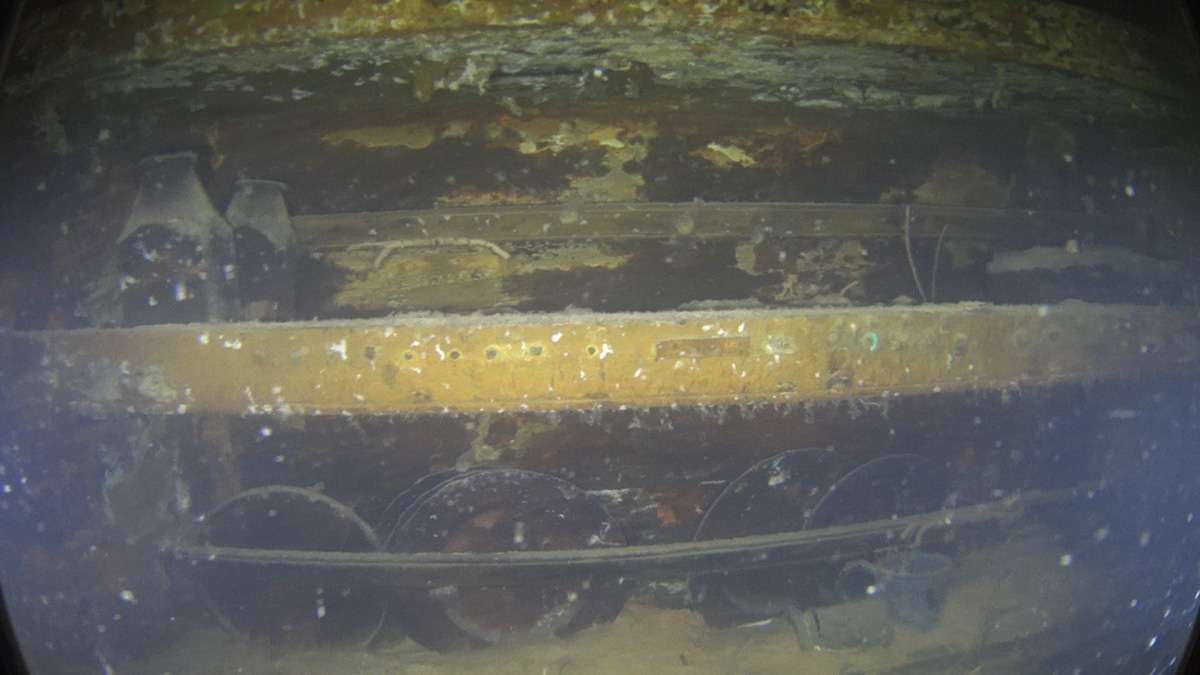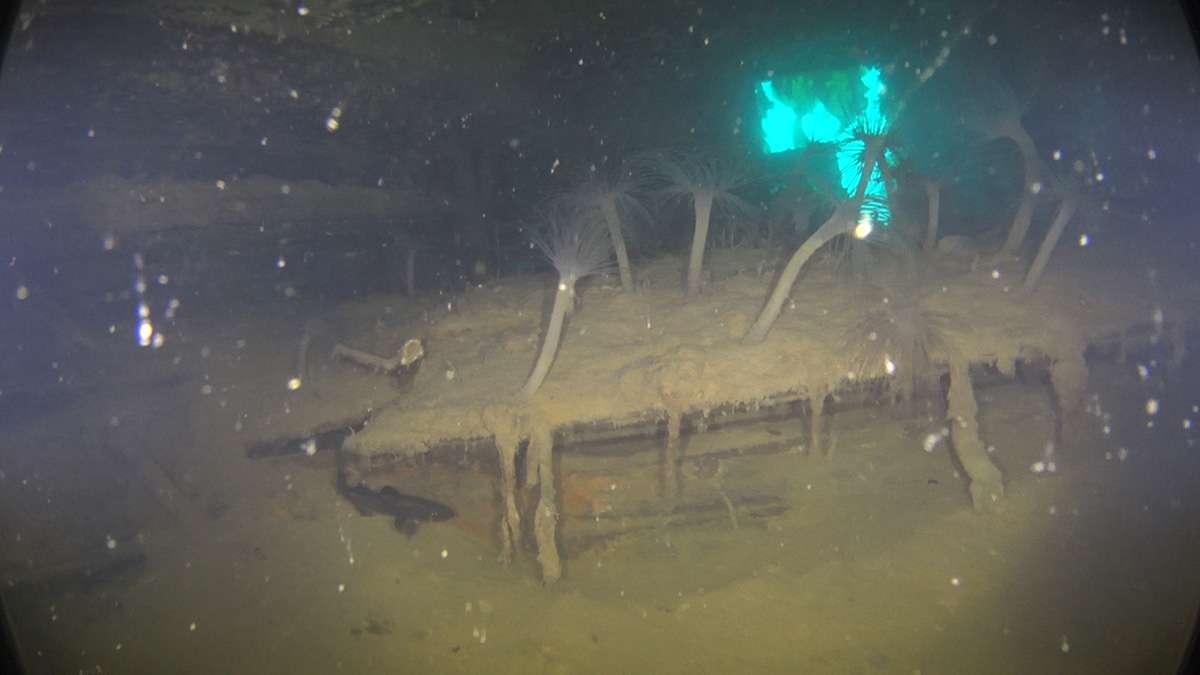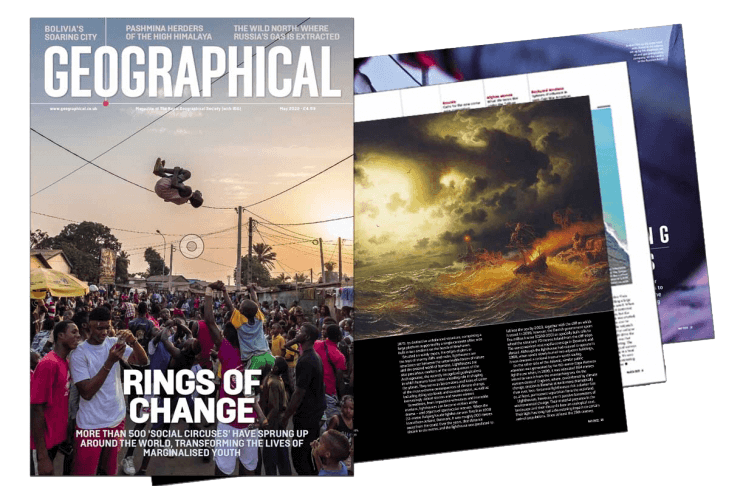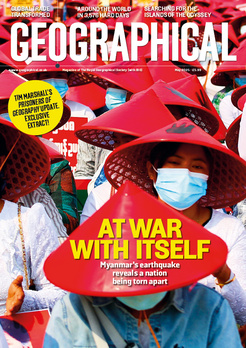
Joseph Frey, governor of The Royal Canadian Geographical Society, discusses the latest findings from the team surveying the lost ships of Sir John Franklin
By Joseph Frey
As a member of the 2014 Parks Canada-led Victoria Strait expedition which discovered Sir John Franklin’s flagship HMS Erebus, I remember thinking now that we have Erebus, HMS Terror, based on historic accounts, would be found crushed and scattered on the seafloor off the west coast of King William Island. So two years, later when Terror was discovered, it came as a surprise to hear that the ship was intact and off the south coast of King William Island, ironically resting at the bottom of Terror Bay.
Stay connected with the Geographical newsletter!
In these turbulent times, we’re committed to telling expansive stories from across the globe, highlighting the everyday lives of normal but extraordinary people. Stay informed and engaged with Geographical.
Get Geographical’s latest news delivered straight to your inbox every Friday!
The fascination with Terror only intensified during the early morning of 28 August when Parks Canada released never-before-seen images and video footage of the ship, summarising the 2019 field season on the ship. This was a season that focused on the 3D structural mapping of Terror and exploring the interior of the wreck using a remotely operated vehicle (ROV). The ROV, during seven dives, was able to enter 20 compartments and/or cabins and take clear photographs of over 90 per cent of the lower deck. The footage is stunning, showing, as an example, shelving lined with intact bottles, glasses, bowls and plates from what is believed to be the officer’s pantry and separately the common sailor’s living area, clearly providing a glimpse into the Royal Navy’s social hierarchy during the mid-Victorian era.

That same August afternoon, through a satellite link, we were able to speak with Ryan Harris who was aboard the Parks Canada’s research vessel RV David Thompson at the Terror site. Harris is a Parks Canada underwater archaeologist and the project director for Erebus and Terror.
He began by talking about what tantalising discoveries could be found in Captain Francis Crozier’s desk that would shed further light on what happened to Franklin’s expedition. ‘When we look at Crozier’s desk, we see that all the drawers are closed and there’s a drift of protective sedimentation over the desk,’ he said. ‘That all suggests a very high level of preservation for the contents of those drawers. We can speculate on the sort of things that we might find inside and the potential for written materials to survive with water temperatures hovering around zero degrees Celsius and the general state of darkness due to the ice cover for much of the year this tends to slow down the aerobic processes of degradation.’ Harris’ hope is that with the sediment covering and the closed drawers, there is a sufficient anaerobic environment that delicate materials such as textiles and paper might survive.

‘Written materials on the ship could shed all kinds of light on what transpired,’ he continued, ‘with a chronology of events of the late stages of the expedition, perhaps shedding light on where the two ships parted company and how they got to their final locations from the point where they were abandoned northwest of King William Island in 1848.’
Unlike the research seasons of 2016 and 2017 – when water clarity was poor – and last year when ice interfered with the expedition, this year’s dive conditions and remarkable water quality permitted Parks Canada underwater archaeologists to make 48 dives down to Terror and clearly observe the ship’s hull.

For the first time divers were able to observe that the ship’s propeller was in its operating position, a significant find as it suggests, along with other clues, that Terror was likely re-manned after being initially abandoned in Victoria Strait and was in operating trim when it unexpectedly sank. ‘The wrecking was not particularly violent as it settled almost vertically on the seafloor,’ said Ryan.
With plans to bring Parks Canada’s dive support barrage to the Terror site next year, we may only be one research season away from recovering documentation that finally fills in the details of Franklin’s ill-fated expedition and one of the world’s most enduring polar expedition mysteries.

Joseph Frey, a member of the 2014 Victoria Strait expedition, is a governor of The Royal Canadian Geographical Society and is a former director and vice-president of The Explorers Club, New York City. He has since participated in the National Oceanographic and Atmospheric Administration’s Battle of the Atlantic expedition mapping German submarine U-576, as well as with the US National Park Service’s search for the Spanish pirate-slave ship Guerrero.

Subscribe to our monthly print magazine!
Subscribe to Geographical today for just £38 a year. Our monthly print magazine is packed full of cutting-edge stories and stunning photography, perfect for anyone fascinated by the world, its landscapes, people and cultures. From climate change and the environment, to scientific developments and global health, we cover a huge range of topics that span the globe. Plus, every issue includes book recommendations, infographics, maps and more!




